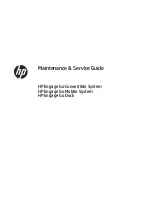
3-3
the terminal goes to sleep until the time it took the last time for the host to
respond has expired; then the terminal wakes up and listens. If it has
nothing, it retransmits its data and waits for a response.
The original data transmission could have collided with another message, or
the Base could have received the Terminal's data but had not yet received
the host's prompt response. If the previous transmission got through, the
Base Station knows that the data is a retransmission rather than a new data
transmission so it sends a message to the Terminal telling it:
“I have nothing for you from the host, go to sleep”.
While in “sleep” mode, the Terminal “wakes” up at a random interval and
asks “do you have anything for me yet”, waiting for either a “go to sleep”
message or a new data prompt. After each delays, the Terminal displays:
WAITING FOR HOST PROMPT
If a Terminal receives
no
response at all from a Base Station (no data
prompt or “go to sleep” message), it retransmits its data and waits for a
response. If the Terminal gets no response after 10 re-transmissions, it
assumes it out of range from the Base Station with which it was
communicating, and attempts of establish contact with any Base Station. If
the Terminal can't contact any Base Station, it displays:
TRANSMISSION FAILED
HIT ANY KEY_
Pressing a key on the Terminal starts the re-transmission process over
again. The RF Terminal will try to retransmit its data, displaying the
TRANSMISSION FAILED message after every 10 unsuccessful tries.
Can I change a prompt after it has been sent?
Normally once the Terminal has received a prompt from the host, it goes to
sleep and waits (as long as it takes) for the operator to scan or key
something in response. The host cannot send another prompt without
creating a "Sequence Error." You might want to change the prompt or
locate a lost terminal with beeping.
There is a special setting in the RF Terminal Setup in which you specify the
time (between 5 seconds and 7 minutes) you want the Terminal to quit
waiting for input from the operator, blank the screen, send back a special
control character to the host program, display "Waiting on Host Prompt"
and wait for a prompt from the host application program; the host
application program can choose to send back different instructions or
simply repeat the previous prompt's instructions, (See
Automatic Check
Back
in the
Programming Section
).
















































